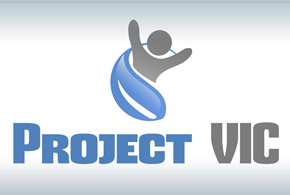Battling child exploitation and pornography in the digital age is an enormous and growing challenge. Individuals and groups involved in illegal activities have access to technology and tools that make it incredibly easy to capture images and share them with others across the Internet. According to the Internet Watch Foundation in the United Kingdom, there has been a 1,500 percent increase in child pornography images since 1997.
One organization taking direct aim at the problem is the International Centre for Missing & Exploited Children (ICMEC). It assists law enforcement agencies by providing tools, technology and other resources to aid in investigations.
At the center of the organization’s efforts is Project VIC, an ecosystem that supports information collection and sharing across international, national and local law enforcement agencies around the world, including INTERPOL and the FBI.
The program is revolutionizing the way investigations take place, and it’s leading to prosecutions. “In the past, a lack of standards made it difficult for agencies to share data and use the most advanced technology and tools available,” says Richard Brown, technology advancement officer for ICMEC. “Images and other data typically existed in different formats and resided in silos. This made it extremely difficult for law enforcement agencies and others to communicate and collaborate effectively.”
This meant that an investigator might view an image, categorize it and slot it into a database. However, without any type of data standard, a colleague just a few cubicles away—or on the other side of the world—might be engaged in exactly the same task, and neither would know it.
Moreover, lacking confidence in the quality of the database and the value of particular images in terms of building a legally sound case, many investigators would lose faith in the overall quality control and avoid using a particular image hash set.
Cloud-Based Repository Drives the Initiative
“Project VIC represents a paradigm shift,” Brown says. The organization relies on the Griffeye Analyze platform (part of the Safer Society Group) to deliver a digital analytics platform that drives the initiative forward. The technology relies on open standards, as well as an open and extensible API for managing data transfers across different systems.
This allows investigating agencies to process large volumes of images and videos, filter irrelevant digital files and aid the user in identifying the most pertinent material through automated routines and visual navigation.
“The technology framework provides aggregate data so that a forensic examiner can easily sweep out all of the images that have been seen time and time again and quickly identify ‘alert images’ that are defined as those good enough to prosecute with,” Brown explains.
Project VIC saves investigators and analysts an enormous amount of time and money, and it increases arrests and convictions. The organization currently has about two million images in its overall hash set.
The project also makes it possible to flag new photographs and identify ground zero for where an image first appeared. With geolocation and camera data, an enforcement agency can identify a possible new victim and take immediate action.
“This initiative advances forensics and overall investigations so that we can better aid exploited children,” Brown reports.









